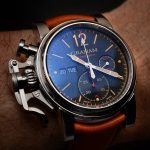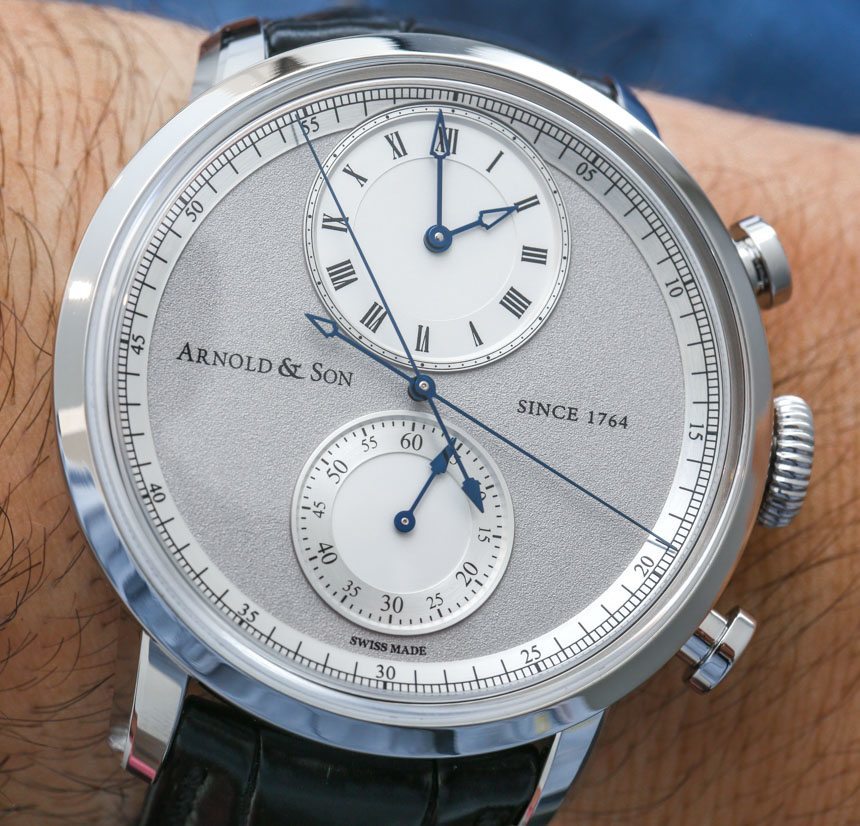
Last year at Baselworld 2014, Swiss Arnold & Son released a lovely new chronograph known as the Arnold & Son CTB Chronograph. As far as I know, this is the first chronograph watch with a “true beat” (dead beat) seconds hand paired to a traditional chronograph complication. aBlogtoWatch first debuted the Arnold & Son CTB Chronograph watch here last March with more technical specs, but read on to learn about this interesting and attractive timepiece.
The Arnold & Son CTB Chronograph is one of those watches that will be difficult to understand without seeing it in operation. In fact, it isn’t even clear that the watch is a chronograph when seen in pictures, nor is it clear how everything works. For this reason, I am happy that we are able to offer a hands-on video of the Arnold & Son CTB Chronograph in action. What you first need to understand, is that there are dual central hands, and one indicates the seconds for the time, and one records the seconds for the chronograph.
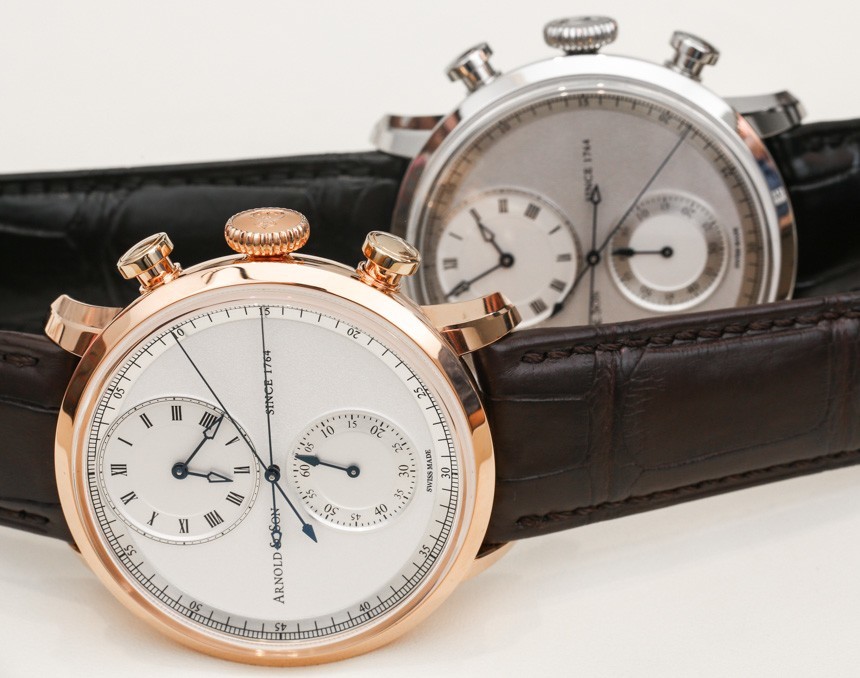
Skeletonizing a watch is no easy feat. And it’s doubly hard for an ultra-thin motion, largely because the motion is already so sparse that eliminating any more substance is bound to affect structural rigidity. Because of this, the A&S8200 calibre in the Arnold & Son UTTE Skeleton watch needed to be thoroughly redesigned and re-engineered. The outcome is the A&S8220 calibre, which steps 3.3mm thick. The extra thickness, according to Arnold & Son, is necessary to ensure rigidity since they sought to skeletonized the motion. However, let us face it, 3.3mm for a tourbillon motion with two barrels and a power reserve of at least 90 hours is seriously impressive.The new A&S8220 calibre boasts some major revisions. As an example, the principal plate has been greatly modified to reveal as much as possible of the inner workings. But perhaps what’s visible to owners is the tourbillon cage has been totally reworked to show off more of this mechanism when keeping the three-dimensional design that has become a signature of this earlier Arnold & Son UTTE watch. In addition, the tourbillon cage is relatively large as compared to the motion. It measures 14mm across, while the movement itself is 32mm. This implies it’s the single most dominating component of the dialup, and in addition to this is the simple fact that the crate is fully hand-polished and chamfered, making it a real visual treat for owners.And because you’d expect, the A&S8220 calibre is also treated to the best haute horlogerie finishing: The principal plate and bridges are constructed using nickel silver and finished with C?tes de Genève rayonnantes; The borders are also polished and chamfered; The steel parts, gears, and ratchets are satin-finished using their edges polished and chamfered; The screws have bevelled and polished heads, and finally, the jewels are put in polished countersinks; Reading of the period is performed off a sapphire disc with printed numerals at 12 o’clock; The hour and minute hands are golden and characteristic white lacquered hints.
The hand that indicates the seconds for the time “ticks” (even though the watch is purely mechanical) because it is a dead beat (“True Beat,” as Arnold & Son likes to call it) seconds hand. This is carried over from traditional regulator clocks which were highly precise instruments used for regulating other clocks. The central chronograph hand sweeps normally as to most other chronograph hands in 4Hz movements. Having them work together is interesting, because one hand ticks and one sweeps. The combination is unique, to say the least.
Under the 12 o’clock indicator on the dial is an eccentric dial for reading the current time. While the dial is small, it is very legible and attractive. We very much appreciate this design that Arnold & Son continues in many of its pieces. Note that the time uses Roman numeral markers while the chronograph elements on the dial use Arabic numeral markers. Over 6 o’clock on the dial is a 60-minute counter for the chronograph, and while the markers are small, it is still legible. The blued steel hands work well on the high-contrast non reflective dial textures and colors.
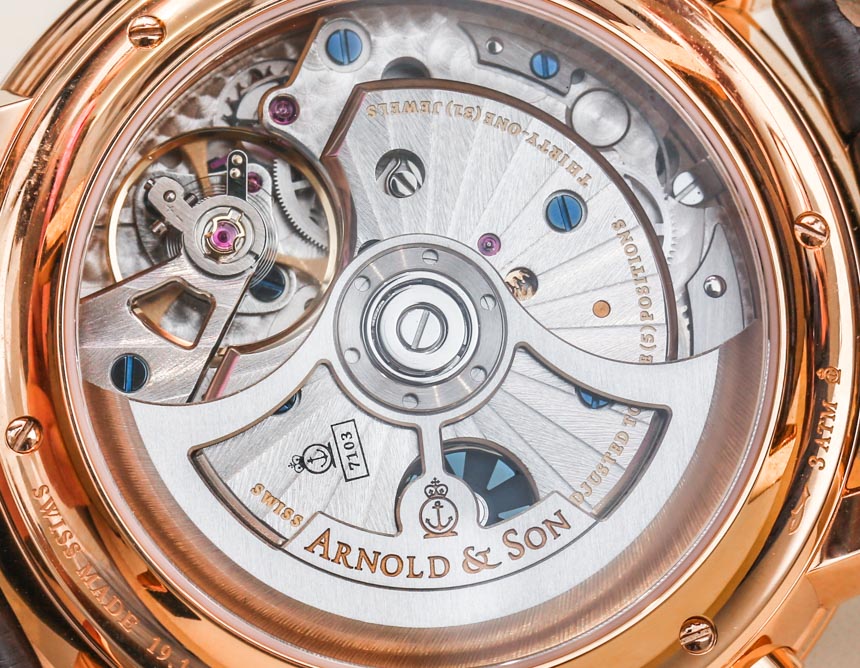
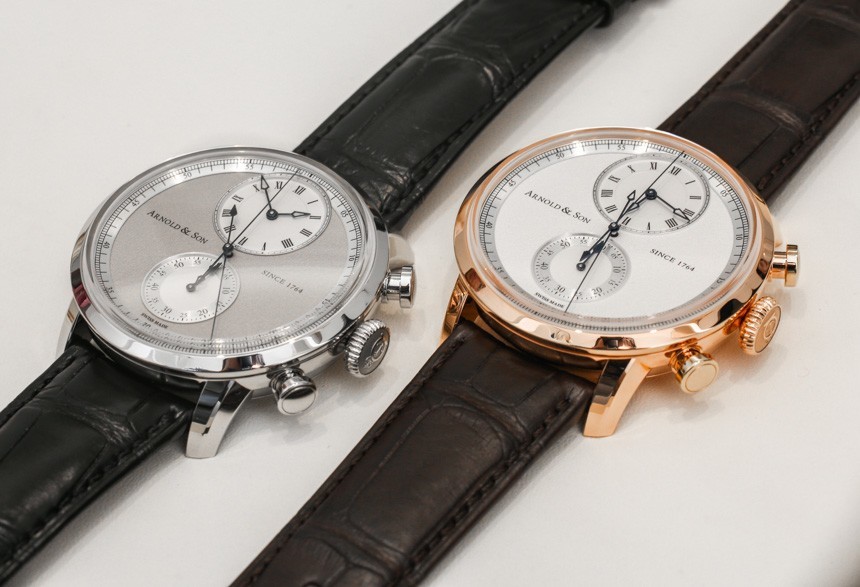
You’ll notice that the steel and gold models of the Arnold & Son CTB Chronograph have slightly different dial colors. The dial is more white (“silvery-white and silvery-opaline”) in the 18k rose gold version, while it is a bit more gray on the steel version. Speaking of which, we really like that Arnold & Son decided to offer a steel version of this interesting watch right off the bat. They have continuously been one of those progressive-minded high-end brands that has been offering steel versions of many of their high-end timepieces in addition to the gold models. This is part of a larger trend of collectors who are eager to get watches with cool movements and designs but don’t want to spend the types of premiums many brands demand for precious metals. We at aBlogtoWatch certainly echo that sentiment in asking brands to make sure more watches come in steel or titanium versions in addition to precious metal cases. Oh, and please don’t try to simply charge precious metal prices for non-precious things (though, sadly, that happens way too much).
Arnold & Son does offer their share of smaller watches, but their sweet-spot is about 44mm, the size of the Arnold & Son CTB Chronograph. The brand realizes that these are designs meant to be shown off, and I think they personally like the larger sizes on their own wrists. Though, if you want 40mm-wide watches, you can get them from the brand. Otherwise, the cases are pretty classic in proportions and handsome on the wrist.
Although the modern Arnold & Son is currently owned by the Citizen Group and continues to be revived in La Chaux-de-Fonds, Switzerland, the heritage of precision timekeeping, advancements in escapement engineering, and Breguet’s influence can still be felt with this timepiece. The Arnold & Son DBG Skeleton essentially combines two movements, each with their own barrel, equipment train, escapement, and balance, combined by one winding system and one centralized second hand. Both dials for home time and GMT are powered with their own dedicated movements, permitting each to be placed independently via a double crown system at 3 and 9 o’clock. Coolness factor aside, this also includes a practical benefit in being able to place GMT time to the minute, which can be particularly beneficial when dealing with time zones offset by half an hour such as parts of India, Australia, and Canada.In comparison to the non-skeletonized version of this Arnold & Son DBG we reviewed before, this incarnation sacrifices some legibility in order to better display that beautifully symmetrical movement. A ring of smoked sapphire crystal glass is used for every dial to help attract the numerals more into focus against the busy backdrop without completely obscuring it, which is a smart move. GMT time can also be differentiated through the dial’s usage of skeletonized hands and Roman numerals, compared to the Arabic numerals and solid palms featured on the house time dial. Unlike the last version, the palms on the Arnold & Son DBG Skeleton are gilded rather than blued, which is visually a wonderful complement to the vulnerable balance wheels but also makes them hard to see at a glance.
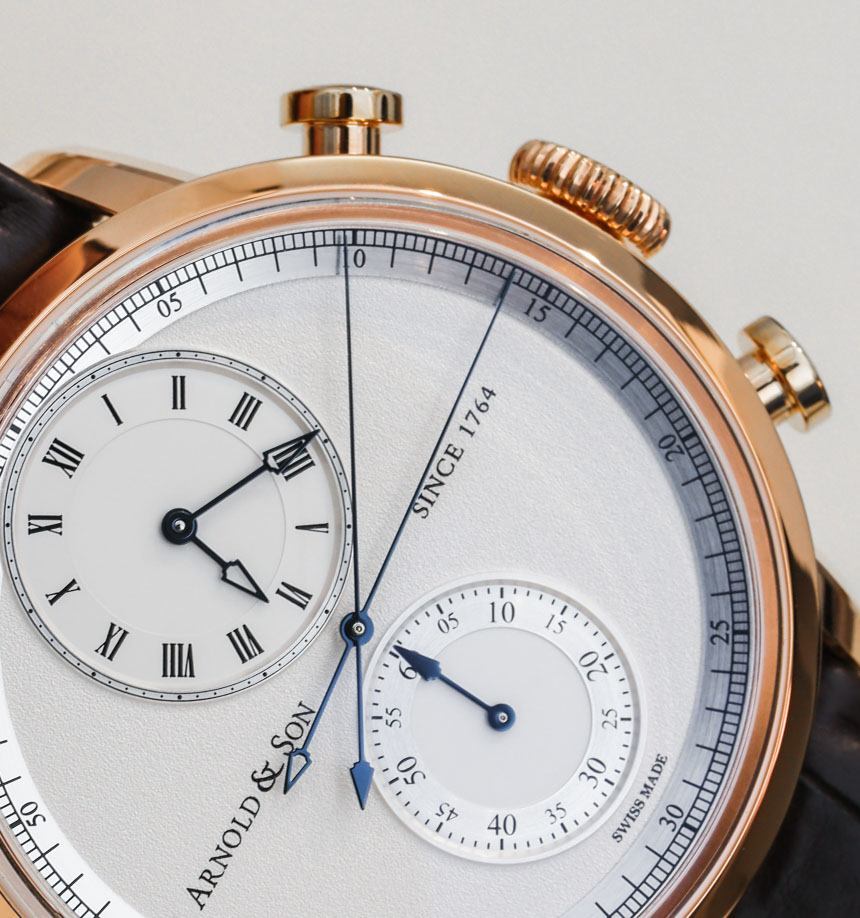
The movement is just 4.4mm thick and operates at 3Hz (21,600bph) and suggests that the time in a subdial with the moments in a lesser, smaller subsidiary dial. For the steel version of this Time Pyramid, Arnold & Son coats much of the movement bridges in “NAC Gray”

